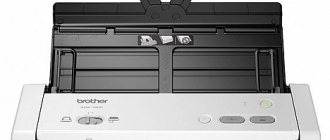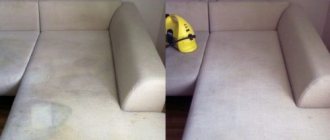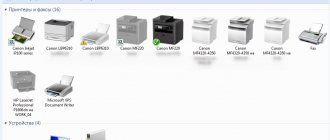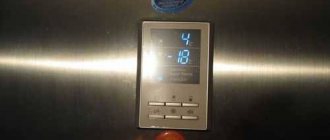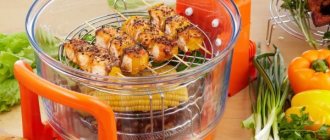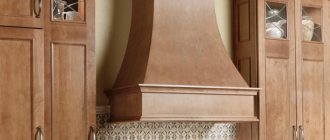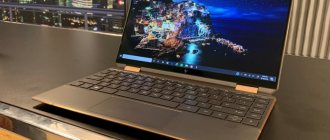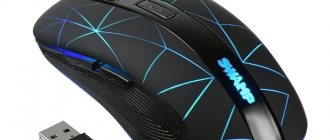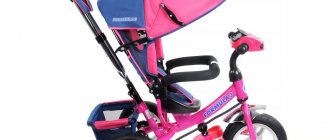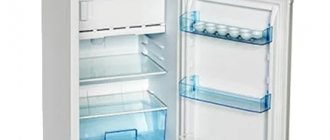With the advent of new synthetic dyes, airbrushing, one of the painting techniques, is rapidly developing. Instead of a brush or pencil, the artist draws with a special machine.
A tool that sprays paint in a thin layer, that's what an airbrush is. With its help, picturesque paintings are created, house facades and fences are painted, and stylistic patterns are applied to cars and motorcycles. Thanks to the specific application of dyes, it is possible to create three-dimensional panoramas with an imitation of rough texture on an absolutely smooth surface.
Device
The airbrush device is structurally similar to a spray gun, which is widely used for all paint and varnish work in automobile workshops. The device is intended for fine work, where the emphasis is on the minimum size of lines drawn with a minimum thickness of paint applied to the working surface.
The standard package includes:
- container for paints;
- trigger buttons or handles;
- control unit (button);
- replaceable nozzles;
- needle.
Additional elements of the machine, which are designed to simplify the artist’s work, include:
- device stand;
- airbrush holder;
- compressor;
- air hose;
- filter for the working environment;
- The airbrush is equipped with replaceable nozzles. The thickness of the applied paint spot and its width depend on the size of the spray unit. The compressor supplies air under high pressure, allowing you to quickly paint large surfaces and create subtle color transitions and smooth lines.
A high-quality tool comes complete with at least two types of attachments, nozzles of various diameters and several replaceable needles.
A few simple rules for working with an airbrush that will facilitate the further creative process:
Dynamic painting - you can’t keep the airbrush in one place for a long time.
Adjustment of paint pressure and concentration. An even layer is an indicator of the norm. The presence of droplets indicates low pressure, while “spider legs,” on the contrary, indicate too high pressure.
First the air, then the paint - this is important to remember when turning on the airbrush.
Cleanliness is the key to successful painting - it is important to thoroughly rinse the airbrush and channels after each use.
Types of airbrushes
Structurally, the airbrush differs in the type of paint mixing:
- internal mixing;
- outdoor
Depending on the supply of solution, there are gravitational and siphon, and according to the order of adjustment of the passage of air and dye - single or double action. Types of airbrushes are classified according to the type of launch control:
- lockable;
- flow-through
Flow-through and lockable
The flow-through design operates without the ability to regulate the spray pattern. Once the compressor is turned on, the artist can only stop or start the paint stream without adjusting the pressure. Modern spray guns operate on the flow control principle. The lockable design of the airbrush allows you to adjust the pass directly with a trigger on the body.
The lockable design has an additional dye consumption system, which allows layers of the required density and thickness to be applied.
Internal and external mixing
An airbrush spray gun with an internal mixing type has additional pipes that are built into the body. The paint forms a mixture with air inside the device, which allows you to strictly dose the mixture consumption. Adjustment is ensured by precise needle movement. Having chosen the required color of car paint, they create precise small patterns on the fenders and hood of the car.
The accuracy of drawing a pattern depends on the position of the needle and the reliability of its fixation.
External mixing is used in simple designs. This tool is accessible to beginner artists. The paint is sprayed without additional internal regulators, the composition is mixed with the air flow and comes out of the nozzle in a uniform stream. Painting a car or creating designs with an airbrush of this type allows you to obtain a uniform coating of the same thickness and color saturation.
Selecting an airbrush
Depending on what kind of artistic work is planned, an airbrush model is selected. Most often, inexpensive dyeing devices with a thin nozzle and needle are used. Such units are quite suitable for beginners. But those who plan to engage in airbrushing seriously should pay attention to the following when purchasing a device:
- The volume of the removable tank (the optimal capacity is 2 liters or a little more).
- Seal the needle and nozzle (Teflon seals are the best option).
- Nozzle diameter (it should not be less than 2 mm).
- Easily replaceable main parts (tank, trigger, air and material nozzles).
- Resistance of seals to the action of the reagents used.
- Availability of control over pressure and dye supply.
Airbrush device
Purchasing a tool taking into account all the characteristics will allow you to economically and efficiently paint on various surfaces.
When choosing, you should also pay attention to the method of supplying the dye and purchase the desired option depending on the object to be painted:
- Single acting with pressure control function. The model is easy to use, does not require special skills, and is suitable for beginners. It is not difficult to use: when you press the trigger, the coloring substance is sprayed in an even layer, and the supply pressure is regulated using a trigger (special valve). As a rule, these models are purchased for painting on walls using acrylic paints. The disadvantage of this device is the inability to draw thin lines and small elements.
- Single action with dye supply control. This airbrush differs from the first option only in the ability to change the density of the applied layer of paint or spray it onto the surface using an aerosol. Using various techniques, you can draw quite complex elements with this unit. Most often, this particular model is purchased for decorating interiors, painting facades or fences with simple designs, and painting small decorative items.
- Double action with or without needle. This is an expensive professional option with a lot of features for those who plan to paint serious pictures on walls or cars. This model allows the artist to easily control the supply of dye and the power of the air jet during work using a trigger, and the position of the needle regulates the supply of the composition. The same device without a needle can quickly and evenly paint a large area. As a rule, professionals opt for the option with a needle; all designer paintings are carried out using such units.
Choosing the right tool will make the work easier, save paint, and allow you to get an excellent result.
How to choose
To choose the right airbrush, consider the following parameters:
- An airbrush powered by a compressor requires an external power source. Equipment powered by cylinders can be equipped with units for regulating pressure and air supply.
- The air hose must be rubber, plastic braided, and of sufficient length.
- Chinese airbrushes are often equipped with a pressure reducer. This will limit the maximum pressure on the device and ensure dynamic air flow.
- Quality of seals. We choose plastic seals for working with acrylic paints (Japanese production).
When choosing a model, the following are taken into account:
- presence of a handle;
- size, weight of the device;
- container volume for dyes (at least 2 pieces from 2 ml);
- number of nozzles;
- the presence of a Teflon seal for the needle;
- number of regulators.
Iwata
Japanese Iwata airbrushes are made of stainless carbon steel, chrome-plated brass, resistant to corrosion, with a Teflon seal. Manual assembly, varieties, and checking the sprayer settings allow you to use the tool to create precise drawings in a wide variety of areas: body art, body airbrushing, textile painting, porcelain painting.
Fengda
Fengda airbrushes (manufactured in China) are chosen by experts in their field, and they are also preferred by those who have only recently begun to master the art of airbrushing. The devices are characterized by ease of use in service stations for body repairs, when painting facades, large areas, and minimal adjustment function.
The model range includes all design types. Not recommended for creating small drawings. The needle seal needs frequent repairs.
Jonnesway
The Jonnesway airbrush (Taiwan) is made of chrome-plated steel; the needles are made of titanium. The company has its own steel foundries and specializes in the production of repair kits and keys for cars of almost all models. The production of airbrushes is a related industry, so the choice of Jonnesway models that are in high demand is limited.
Features of working with acrylic paints
When painting models with an airbrush, the quality of the paint, its hiding power, dispersion and other properties matter. Among the paints for modeling, enamels and water-acrylic paints stand out. Enamels have a number of advantages:
- metallics look more realistic;
- transparent enamels can create a candy effect, like on real cars, if the task requires it;
- All enamels fit and adhere to the surface better than acrylic.
Painting models with acrylic paints is overwhelming due to the fact that all the advantages of enamel are usually canceled out at home by a rather pungent odor. Having a wide palette in the rulers, with a water-acrylic ruler, beginners in modeling may have problems with dilution. Especially with a shallow trigger stroke, acrylic particles quickly harden on the needle and quickly clog the nozzle, so it is better to dilute the paint to a “milk” state. As a thinner, you can use vodka or a proprietary thinner from the manufacturer (airbrush thinner). If, after liquefaction, the paint continues to clog thin nozzles with a diameter of 0.15-0.2 mm, a drying retarder - retarder medium - can help.
When choosing the right airbrush, you can rely on the following rule:
- 0.15-0.3 mm – drawing camouflage and other subtleties with an airbrush using the “free” hand method;
- 0.35-0.5 mm – applying a base layer, priming and varnishing the model. Because with an airbrush with a narrower nozzle it is extremely inconvenient to dilute primers and varnishes, which are always thicker in consistency.
The problem of thickness and possible sticking on the needle is especially pressing when painting models with acrylic paints. And when bred, they may lose their originally inherent qualities. Also, the soil may be coarsely dispersed and form a difficult-to-wash film on a thin diameter.
After painting models with an airbrush and finishing work with acrylic rulers, you must thoroughly rinse the tool with the same vodka or alcohol; if the case is already advanced and there are old particles of dried paint left, washing liquid will help to soak and wash them clean.
If, after the stage of painting the models, the airbrush is clogged, a video on disassembling and reassembling down to the last bolt will save you from possible breakdown of spare parts. Although it is better not to let it become completely clogged and to clean the tool immediately after work with alcohol or rinsing.
How to use
Setting up the device, preparing and selecting a surface are necessary steps to mastering the airbrush. 3-5 hours are enough to learn how to use the tool correctly. Preparation includes:
- Connecting the air supply hose to the compressor.
- Installing a paint tank.
- Blow out the nozzle with a stream of air.
When changing colors, you should always flush the nozzle with solvent to avoid uneven color in the design. It is best to practice on a sheet of cardboard or use a stencil for work.
Why does it spit paint?
Setting up an airbrush requires care and caution when fixing the nozzle. The kit includes a key for installing a threaded nozzle. The cone-shaped nozzle is installed by pressing the cap.
If the threaded nozzle with nozzle is installed offset, a distortion occurs in the air supply system. The pressure decreases, the device may not produce a uniform stream, but spit paint. Among the possible reasons for the supply disruption are:
- clogged nozzle;
- There are dense pieces in the dye, uneven consistency;
- lack, excess pressure;
- insufficient fixation of the needle, worn seal;
- incorrect consistency of dye.
The smaller the nozzle, the less thick the chosen paint should be. The thicker the dye is chosen, the more pressure the compressor must supply.
Settings
A properly configured tool will turn the painting or painting procedure into a pleasant hobby. Before starting work, the following settings are required:
- A stable supply of compressed air at the selected pressure is checked.
- Place a container with paint of the consistency that is suitable for the selected nozzle.
- Adjustment is made by moving the needle.
- If the airbrush does not produce a jet when you press the trigger, you should loosen the needle lock.
- If spraying starts at the slightest touch of the handle, move the needle forward using the adjusting screw.
How to paint
You can master the airbrush at a semi-professional level after several hours of training. How to use an airbrush for a beginner:
- You should not spray the composition on one point for more than a second: the paint may flow.
- After installing the dye tank, you should check the quality of the jet on the rough material (a piece of cardboard).
- Do not bring the nozzle close to the work surface. The minimum distance is 2 mm.
- The farther you hold the nozzle from the working surface, the wider the drawing point will be, and its contours will be blurred.
- To accurately draw an element, it is recommended to take the smallest diameter of the nozzle and hold the airbrush at the minimum allowable distance.
- The angle of inclination of the jet to the working surface should be as close as possible to 90°.
An airbrush is used for drawing, monochromatic painting, and can be used to create optical illusions on a completely flat surface. This is a convenient tool for repairing paintwork and creating airbrushing when decorating a body.
Airbrush capabilities for modeling
In order for the model to become an exact copy, it must be painted like the original. With full compliance with all necessary processes, while conveying all the subtleties of the overall background and shades of the coating. Some sets include brushes and paints. But this is for those who took up the assembly for the first time.
By painting your model with brushes, you will only make it look like the original, no matter how accurately you assemble it. And for high-quality coloring in modeling there is a special tool, and it’s called an airbrush.
Using an airbrush, paint and varnish coatings are applied to the body and parts of the model with high quality. You can set color tones and halftones, depict camouflage colors, apply signs and write inscriptions. Airbrush basics for beginners: how to use an airbrush?
However, before you start working with an airbrush, you need to understand how it works, what types of airbrushes for modeling there are, and what features different types of this tool have. All this knowledge will help you understand which airbrush is more convenient for solving certain problems and which model of the tool is right for you.

